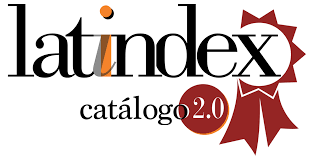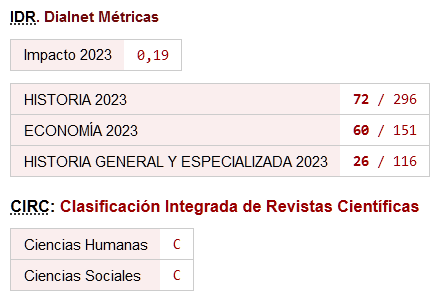Exploring the role of accounting history following the adoption of IFRS in Europe. The case of Italy
DOI:
https://doi.org/10.26784/issn.1886-1881.v6i11.133Palabras clave:
Italy, Accounting history, Accounting theory, Authors, IFRSResumen
The mandatory adoption of the International Financial Reporting Standards (IFRS), enforced by Regulation (EC) No. 1606/2002, may be particularly upsetting in the European countries with strong traditions of accounting theory and regulation. This paper presents an investigation that stresses the importance of previous accounting solutions which were developed nationally to face the challenge of adopting an exogenously developed set of international accounting standards, such as IFRS, in the current EU setting. The research focuses on Italy and reviews the “patrimonial” accounting approach developed in the 1880s by Fabio Besta (1845-1922), an Italian scholar who is unanimously considered to be the initiator of the modern accounting theory in Italy. His approach was in use in Italy until the 1970s, after which the approach of another scholar, Gino Zappa (1879-1960), has been followed. Fabio Besta shifted from a personalistic to a materialistic (or nonpersonalistic) theory of accounts. He put forward new ideas quite similar in many respects to the modern AngloAmerican theoretical approaches to accounting (Zambon, 2001; Viganò and Mattessich, 2007). The “patrimonial” accounting theory focuses on the firm’s wealth, as reflected in the balance sheet, and on its valuation. It evokes the so-called “asset and liability view”, which is the approach used by several standardsetting bodies, e.g. FASB and IASB, to develop conceptual frameworks (Johnson, 2004). Such an approach defines the objective of financial statements as providing information on the firm’s financial position interpreted as the firm’s wealth. Assets and liabilities are defined as resources and obligations and are regarded to be the primary indicators of the wealth of a firm. Revenues and expenses are indirectly defined in terms of changes in
assets and liabilities (Sprouse and Moonitz, 1962). Accordingly, income measures the increase or decrease in the firm’s wealth (FASB, 1976). This paper begins with an analysis of Besta’s theory, and then proceeds to compare Besta’s theory with the IFRS conceptual framework and measurement criteria, showing several similarities. In particular, it emerges that both approaches are built on the same theoretical foundations, namely the “patrimonial” accounting perspective and the atominstic-reductionist view of the firm’s wealth. In conclusion, this study appraises anew Fabio Besta’s thought in the age of IFRS. His theoretical perspectives might help to understand better and thereby more effectively evaluate the present accounting context, such to possibly favour a better contribution from contemporary accounting researchers in the new international scenario where accounting standards have been developing.
Descargas
Citas
Alfieri, V. (1923): "La figura di Fabio Besta", Rivista Italiana di Ragioneria, 1, 1-7.
Anthony, R. N. (1966): Contabilità per la direzione, Milan: Etas Kompass,.
Anthony, R. N(1987): "We don't have the accounting concepts we need", Harvard Business Review, 1, 75- 83.
Belkaoui, A. (1985): Accounting theory, second edition, New York: Harcourt Brace Jovanovich.
Besta, F. (1880): Prolusione. Prolusione letta nella solenne apertura degli studi per l'anno scolastico 1880-01 alla R. Scuola superiore di commercio in Venezia, Bari: Cacucci, Biblioteca storica di Economia aziendale Venice: Tipografia dell'Istituto Coletti, reprint (1987).
Besta, F. (1882-83/1922): La Ragioneria, volume I-III, reprint of second edition, revised and extended edition with the contribution of Professors Vittorio Alfieri, Carlo Ghidiglia and Pietro Rigobon, Milan: Vallardi.
Briston, R. (1978): "The evolution of accounting in developing countries", International Journal of Accounting, 14(1), 105-120.
Cairns, D. (2006): "The Use of Fair Value in IFRS", Accounting in Europe, 3, 5-22. https://doi.org/10.1080/09638180600920053
Canziani, A. (1982): "Measurements and calculations in accounting: a note on continental vs. anglo-saxon methodology", Economia Aziendale, 1, 57-71.
Canziani, A. (1987): "Sulle premesse metodologiche della rivoluzione zappiana", Saggi di Economia Aziendale per Lino Azzini, 142-165, Milan: Giuffrè.
Carnegie, G.D.; Napier, C.J. (2002): "Exploring comparative international accounting history", Accounting, Auditing & Accountability Journal, 15(5), 689-718.
https://doi.org/10.1108/09513570210448966
Carnegie, G.D.; Napier, C.J. (1996): "Critical and interpretive histories: insights into accounting's present and future through its past", Accounting, Auditing & Accountability Journal, 9(3), 7-39. https://doi.org/10.1108/09513579610121956
Cassandro, P.E. (1972): "Fabio Besta", Rivista Italiana di Ragioneria, 10, 311-321.
Catturi, G. (1997): Teorie Contabili e scenari economico-aziendali, second edition, Padua: Cedam.
Cerboni, G. (1866): Sull'ordinamento della contabilità dello Stato, Florence: Tipografia e Cartoleria Militare di Tito Giuliani.
Ceriani, G. (2006): "Il sistema contabile patrimoniale nell'impostazione di Fabio Besta, nella variante corrente e nella variante anglo-americana", Contabilità e cultura aziendale, 4, 33-62.
Chandler, R. A. (1992): "The International harmonization of accounting: In search of influence", International Journal of Accounting, 27(3), 222-233.
Chow, Y. C. (1942): "The doctrine of proprietorship", The Accounting Review, 17, 157-163.
D'Arcy, A. (2001): "Accounting classification and the International harmonization debate - an empirical investigation", Accounting, Organization and Society, 26 (4/5), 327-349. https://doi.org/10.1016/S0361-3682(00)00036-2
D'Ippolito, T. (1966): "La teoria della partita doppia secondo Fabio Besta", Rivista Italiana di Ragioneria, 8/9, 243-256; 10, 301-307.
Degranges, E. (1795): La tenue des livres rendue facile, Paris: Hocquart.
Degranges, E. (1804): Supplément à la Tenue des livres rendue facile ou nouvelle méthode pour tenir les livres par moyen d'un seul registre, Paris: Hocquart.
De La Porte, M. (1865): La Guide des Négocians & Teneurs de Livres au nouveau traité sue les Livres des comptes à Parties Doubles, contenant une Instruction générale pour les bien tenir suivant la veritable méthode Italienne ecc., Paris: Libraire sur le Vygendam.
De La Porte, M. (1712): La science des Négocians et teneur de livres, ecc., Paris: G. Cavelier.
Del Pozzo, A. (2007): "I punti controversi delle valutazioni al fair value emergenti dal framework dello IASB", Gruppo di studio e attenzione dell'Accademia Italiana di Economia Aziendale (ed.), L'analisi degli effetti sul bilancio dell'introduzione dei principi contabili internazionali IAS/IFRS, volume 1, chapter 6, 213-229, Rome: RIREA.
Di Pietra, R. (2007): "Osservazioni critiche e proposte di miglioramento del framework dello IASB", Gruppo di studio e attenzione dell'Accademia Italiana di Economia Aziendale (ed.), L'analisi degli effetti sul bilancio dell'introduzione dei principi contabili internazionali IAS/IFRS, volume 1, chapter 9, 303-313, Rome: RIREA.
Di Pietra, R.; McLeay, S. and Riccaboni, A. (2001): "Regulating accounting within the political and legal system", S. McLeay and A. Riccaboni (Eds.), 59-78, Contemporary issues in accounting regulation Boston: Kluwer Academic Publishers. https://doi.org/10.1007/978-1-4615-4589-7_3
Financial Accounting Standards Board, FASB (1976): FASB Discussion Memorandum, Conceptual Framework for Financial Accounting and Reporting: Elements of Financial Statements and their Measurement, Stamford, CT: FASB.
Flower, J.; Ebbero, G. (2002): Global Financial Reporting, Basingstoke: Palcrave. https://doi.org/10.1007/978-1-137-10538-7
Galassi, G. (1984) "Accounting research in Italy: past, present and future", Hopwood, A. G. and H. Schreuder (eds), European Contributions to Accounting Research: The Achievements of the Last Decade, 163-187, Amsterdam: VU Uitgeverij Free University Press,.
Galassi, G.; Mattessich, R. (2004) "Italian Accounting Research in the first half of the 20th century", Review of Accounting and Finance, 3(2), 62-83. https://doi.org/10.1108/eb043403
Giannessi, E. (1979): Appunti di economia aziendale, Pisa: Pacini.
Giannessi, E. (1980): I precursori in economia aziendale, fourth edition, Milano: Giuffrè Editore, (Previously published in Giannessi, E. (1954): Attuali tendenze delle dottrine economico-tecniche, Pisa: Cursi).
Hatfield, H. R. (1909): Modern accounting, New York: D. Appleton & Co.
Hopwood, A.G. (1983): "On trying to study accounting in the contexts in which it operates", Accounting, Organizations and Society, 8 (2/3), 287-305. https://doi.org/10.1016/0361-3682(83)90035-1
International Accounting Standards Committee, IASC (1989): Framework for the Preparation and Presentation of Financial Statements, London.
Johnson, L.T. (2004): "Understanding the Conceptual Framework", article from The FASB Report, December 28, 2004, available at: http://www.fasb.org/articles&reports/conceptual_framework_tfr_dec2004.pdf.
Kester, R.B. (1917-18): Accounting theory and practice, volume 1-2, New York: Ronald Press.
Lionzo, A. (2004): Il sistema dei valori di bilancio nella prospettiva dei principi contabili internazionali, Milano: FrancoAngeli.
Marchi, F. (1867): I Cinquecontisti, ovvero la ingannevole teoria che viene insegnata negli Istituti Tecnici del Regno e fouri del Regno, intorno al sistema della scrittura a partita doppia, e nuovo saggio per la facile intelligenza e applicazione di quel sistema, Prato: Giochetti.
Napier, C.J. (1989): "Research directions in accounting history", British Accounting Review, 21 (3), September, 237-54. https://doi.org/10.1016/0890-8389(89)90095-4
Paton, W. A. (1922): Accounting theory, New York: Ronald Press. Paton, W.A.; Littleton, A.C.
Paton, W. A. (1955): "An Introduction to Corporate Accounting Standards", American Accounting Association Monograph No. 3, sixth print, Ann Arbor, MI: American Accounting Association.
Perrone, E.G. (1986): "La dottrina di Fabio Besta nell'evoluzione della Ragioneria", Quaderni dell'Istituto di Ragioneria dell'Università di Siena, Siena: Tipografia Senese .
Pozzoli, P. (2007): "Le tecniche di valutazione: lineamenti generali" Gruppo di studio e attenzione dell'Accademia Italiana di Economia Aziendale (ed.), L'analisi degli effetti sul bilancio dell'introduzione dei principi contabili internazionali IAS/IFRS, volume 2, chapter 1, 23-38, Rome: RIREA.
Riccaboni, A; Ghirri R. (1994): European Finacial Reporting - Italy, London and New York: Routledge, in association with ICAEW.
Richichi, V. (1947): Il sistema contabile di Besta e quello di Zappa: raffronti e considerazioni, Rome: Edizioni dell'Ateneo.
Rossi, G. (1882): L'ente economico-amministrativo studiato secondo la materia, le funzioni, l'organizzazione e la varietà delle sue forme, introduzione alla scienza della ragioneria generale, volume 1, Reggio Emilia: Stabilimento Tipo-litografico degli Artigianelli.
Ryan, B.; Scapens, R.W. and M. Theobold (2002): Research Method and Methodology in Finance and Accounting, second edition, London: Thomson.
Schmalenbach, E. (1919): "Grundlagen dynamischer Bilanzlehre", Zeitschrift für handelswissenschaftliche Forschung, 13(1-4), 1-6.
Sprouse, R.; Moonitz, M. (1962): A tentative Set of Broad Accounting Principles. An Accounting Research Study, New York: AICPA.
Sprague, Ch. E. (1907): The philosophy of accounts, New York: published by the author.
Staubus, G. J. (1961): A Theory of Accounting to Investors, Berkeley: University of California Press.
Sterling, R. (1972): "Decision-Oriented Financial Accounting", Accounting and Business Research, Summer, 198-208. https://doi.org/10.1080/00014788.1972.9728598
Viganò, E. (1996): L'economia aziendale e la ragioneria. Evoluzione, prospettive internazionali, Padua: Cedam.
Viganò, E. (1998): "Accounting and business economics traditions in Italy", European Accounting Review, 3, 381-403. https://doi.org/10.1080/096381898336349
Viganò, E.; Mattessich, R. (2007): "Accounting research in Italy: second half of the 20th century", Review of Accounting and Finance, 6(1), 21-41. https://doi.org/10.1108/14757700710725449
Whittington, G. (1986): "Financial accounting theory - an overview", British Accounting Review, 18 (Autumn), 4-41.
Wüstermann, J.; Kierzek, S. (2005): "Revenue recognition under IFRS revisited: conceptual models, current proposals and practical consequences", Accounting in Europe, 2, 69- 106. https://doi.org/10.1080/09638180500379111
Zambon, S. (2002): Locating accounting in its national context: the case of Italy, Milan: FrancoAngeli.
Zambon, S. (2001): "Italy", in Alexander, D. and S. Archer (eds.) European Accounting Guide, fourth edition, 520-667, New York: Aspen Law & Business.
Zambon, S. (1996): Entità e proprietà nei bilanci di esercizio, Padua: Cedam.
Zan, L. (1994): "Toward a history of accounting histories: perspectives from the Italian tradition", The European Accounting Review, 2, 255-307.
https://doi.org/10.1080/09638189400000021
Zeff, S.A.; Dharan, B.G. (1994): Readings and Notes on Financial Accounting. Issues and Controversies, fourth edition, New York: McGraw-Hill.
Descargas
Publicado
Cómo citar
Número
Sección
Licencia

Esta obra está bajo una licencia internacional Creative Commons Atribución-NoComercial-CompartirIgual 4.0.










